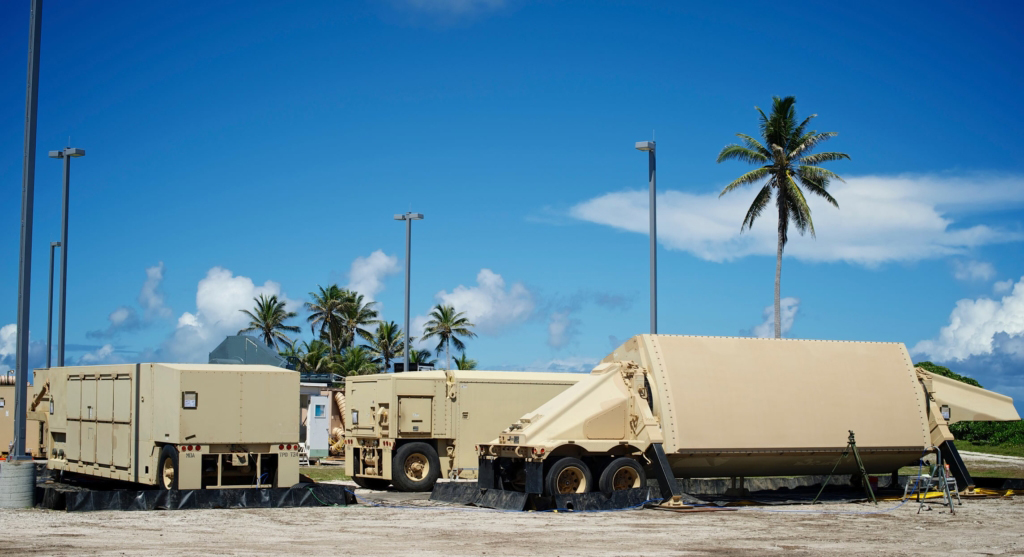Press Release
Prototype Planner Offers New Capability for Radar Search Plans
The questions a missile defense system sensor manager asks every day are similar to the tough, multipart problems at the end of a chapter in a math textbook — a very advanced math textbook. If two radars have 10 different search plans, what’s the optimal combination to support a certain mission? How about to help defend a particular location? And what about to detect short-, intermediate- and long-range missiles?
Previously, getting the answers was a long process that produced a limited result: an unwieldy written document that couldn’t account for shifting variables and emerging questions on the ground. That’s until the Missile Defense Agency (MDA) asked the Johns Hopkins Applied Physics Laboratory (APL) in Laurel, Maryland, to conceptualize how to transform that static document into a dynamic computer program, known as a radar mission planner.
“Through the current process, it can take a two months of engineering effort for the warfighter to get answers to what sometimes are very basic questions,” explained Steve Shollenberger, program manager for Strategic Missile Defense in APL’s Air and Missile Defense Sector (AMDS). “With a planner in hand, they could get the answer themselves in just a couple of minutes.”
The ambition was for a radar mission planner to run on laptops and workstations closer to the warfighters and battle managers who control the ground-based Army Navy/Transportable Radar Surveillance and Control Model 2, or AN/TPY-2, radars around the world that serve as the front line of missile defense. At their fingertips, it could quickly identify the best radar search plans, as well as defensive gaps that need to be addressed, in response to new situations and incoming intelligence.
The journey to translate that idea into reality did not begin when the MDA first approached APL to write the planner requirements in 2016, but nearly a decade earlier, when the Lab engaged in operational mission planning for the first AN/TPY-2 radar deployments in 2007.
Hitting the Ground Running
At that time, APL was involved in analyzing the performance of existing radar search plans and saw a better way to design more efficient and more capable plans, optimized for different missions with different needs.
“The first forward-based radar was deployed to Japan, and the second radar that was forward deployed was in the Middle East,” said Shollenberger. “The nature of the mission for the radar in the Middle East had some fundamental differences from the radar in Japan, and the initial designs weren’t taking advantage of some differences you could make in the search plans.”
“As missions started to expand and warfighters wanted to do more, we wanted to make sure we were using the resources we had in the most effective way: to defend the largest land area and the most critical assets,” said Adam Kobulnicky, who oversees the Multi-Domain System Concepts Group in AMDS.
APL created a computational mathematical process to quickly and automatically optimize search plans. The Lab-designed search plans began to be fielded directly and helped inform the contractor on how to improve their own search plans.
Along the way, APL worked closely with warfighters at the helm of AN/TPY-2 radars around the world to understand their needs, holding video teleconferences, reading their writings, asking questions and offering quick-turn analyses that helped the warfighters understand different search plan performance capabilities.
“We put ourselves in their shoes to understand their mission,” said Kobulnicky. “If we were operating those radars, what information would we need to know to best use that system?”
Over the years, APL fostered a keen understanding of the specific questions warfighters had. That knowledge, coupled with the Lab-developed engineering tools, allowed APL to pick up the call to outline requirements for a planner that could deliver the answers.
Prototypes Are Priceless
APL wrote pages of requirements, describing the different ways an effective planner would need to function. However, not every partner helping to develop the tool had the same intimate understanding of potential use cases and warfighter needs.
“One of the best ways to show them was to make a prototype,” said Kobulnicky. “If a picture is worth a thousand words, a graphical user interface with buttons that let you do and see the things that the planner needs to do might be even more compelling.”
Mark McMillen, APL’s MDA Sensor Directorate operational mission planning lead and now assistant group supervisor of the Multi-Domain System Concepts Group, led the team that developed the prototype. Within a couple of months the team, which included AMDS applied mathematicians Eric Farmer and Lauren Williams, produced a working version to preview with the sponsor, other design partners and warfighters.
Over the next year, they continued to advance the prototype, which can now generate new search plans and build data visualizations, 3D visualizations and PowerPoint reports almost entirely automatically. It also includes a series of corresponding training videos that help warfighters cycling in and out of two-year tours quickly get up to speed on how to use the tool.
The prototype’s analytical capabilities have also helped APL even more quickly optimize AN/TPY-2 search plans, several of which are currently fielded and serve as the default plans for primary missions. The same capabilities enable the Lab to rapidly address questions that continue to come in from warfighters and senior defense decision-makers in response to unfolding events, providing answers to one recent request in under 24 hours.
“With innovative computer science and mathematical approaches, we evolved the limits of ‘feasible design,’ pushed the community to take on more challenging missions and produced designs to effectively cover those,” reflected McMillen. “It’s still a one-of-a-kind capability, orders of magnitude faster than alternatives.”
